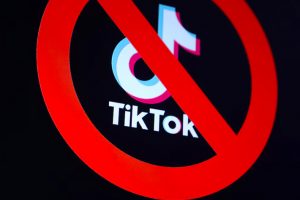Rising costs for fuel, groceries and other essentials in Asia, the US and Europe have spurred concerns about lower consumer spending on tech gadgets, and Wall Street now is uncertain whether Apple can sell as many iPhones as it did last year.
Apple reports fiscal second-quarter results on Thursday.
“Demand is the focus, given the inflation pressure in the US, global and China’s economy uncertainties,” Jeff Pu, an analyst at Haitong International Tech Research, said. “Supply issue is important too, but it is more short term.”
In China, the world’s largest smartphone consumer market, total industry phone shipments this year are expected to be 300 million units, down from about 325 million units last year, according to research provider Trendforce.
Analysts expects more deterioration as China’s economy takes a hit from strict Covid-19 curbs and the Ukraine war.
To grow its footprint elsewhere in China, which generates at least a fifth of Apple’s revenue, the company launched a low-cost 5G iPhone SE in March to woo consumers looking to upgrade on a budget.
But that plan might not succeed as fewer consumers plan upgrades, according to Counterpoint Research’s Jeff Fieldhack.
China Sales Down in First Quarter
Smartphone sales in China fell 14% year-on-year in the first quarter to 74.2 million units, with volumes falling to levels last seen during the first quarter of 2020, Counterpoint said.
Vivo captured the biggest market share, with 19.7%, followed by Oppo with 18%, and Apple with 17.9%, the research firm said.
Demand for 5G phones is expected to dwindle further in China, too, as consumers limit spending to everyday essentials amid slowing economic growth.
“When we sit here half a year from now, we’ll probably say that this was the quarter where there’s this new wave of headwinds that came in and shifted the market around,” Canalys analyst Runar Bjørhovde said.
“It’s commencing a lot of challenges that will come up in the next few quarters.”
Apple – a pandemic winner as demand for its iPhones, MacBooks and services surged – still grew market share last year due to the popularity of its iPhone 13 series.
It is expected to report revenue of $93.89 billion for its fiscal second quarter, a 4.8% rise, but its slowest growth rate in six quarters.
Sales of iPhones, where Apple gets most of its revenue, are expected to fall slightly to $47.88 billion, according to Refinitiv data.
Though Apple lost out on billions of dollars in sales last year due to product shortages, it escaped much of the supply issues that plagued other tech companies, thanks to its buying power and the company’s ability to place custom orders for components.
It also prioritised manufacturing more expensive, high-margin products. Apple forecast that those supply issues would continue to decrease in its second quarter, another reason why analysts have shifted focus to the demand side.
- Reuters, with additional editing by George Russell
READ MORE:
Texas Fintech Sues Digital Payment Giants PayPal, Apple Pay
Apple Supplier Foxconn Halts Operations at 2 China Plants – SCMP
Apple Grabs Record China Market Share as Q4 Sales Surge
























